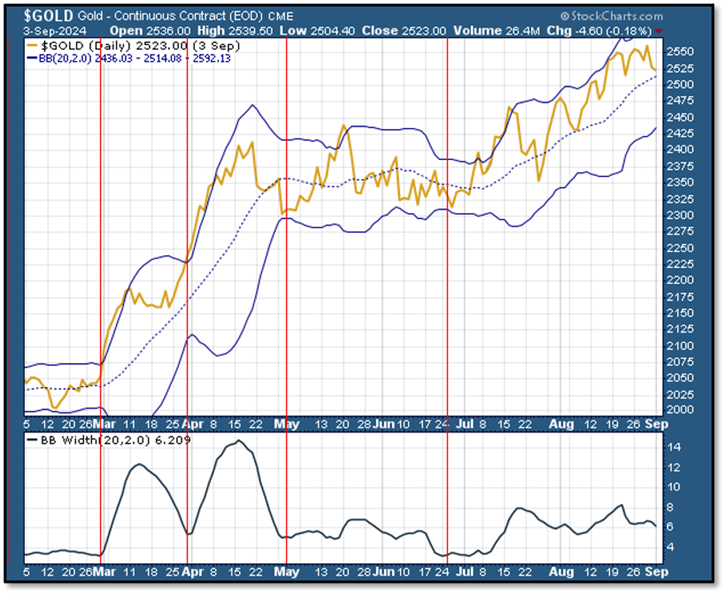Sometimes an investment outperforms by falling less. That’s what’s happened earlier this week when US equity indices sold off heavily while gold lost only a fraction of a percent. This isn’t just a short-term trend. The markets are always telling a story, and right now they’re saying that investors want to own gold, counsels Brien Lundin, executive editor of Gold Newsletter.
Since the beginning of March, gold has been rising regardless of what the stock market, Treasury yields, the dollar, or real interest rates are doing. Investors want to own it because of the debt trap that the US and other sovereigns are now facing. They want to own it because of the many signals now warning that we’re already in a recession. They want to own it because of rising costs in manufacturing that are indicating another surge in inflation.
(Editor’s Note: Brien Lundin is speaking at the 2024 MoneyShow Orlando, which runs Oct. 17-19. Click HERE to register)
These are just a few of the many varied reasons to own gold at this moment, and it’s why much higher price levels are ahead. But there are also some risks just ahead that we need to be aware of.
You see, the markets have been pricing in a Federal Reserve interest rate pivot since early July. For gold, we see that this is when the holdings in the SPDR Gold Shares ETF (GLD) first began to show significant inflows. And at the beginning of August, the mining stock indices began to outperform gold as investors began to look for leverage.
In the broader markets, there has also been an important shift over the past couple of weeks, as bad news has once again become bearish for equities. The signs of imminent (if not already present) recession have sent the major stock indices tumbling.
The big risk just ahead is that, as the Fed meeting approaches or when they actually pivot, that move will have been fully priced in and traders will exit their trades. This “buy the rumor, sell the news” phenomenon could lead to a big sell-off across the board, from stocks to bonds to gold and mining stocks. If so, I expect it to be short-lived.

I’ve drawn vertical lines marking each instance where the width of the Bollinger bands bottomed and, as you can see, these have reliably predicted the start of each new rally in gold. Because gold has been climbing the upper band since early August, that upper band has actually risen out of the range of this chart.
But if you look at the band-width panel at the bottom, you can see that the width of the bands, while falling, has yet to reach the kind of bottom that we’re looking for.
Even though I expect some price weakness around the Fed decision, I think that overall volatility for gold will continue to drop. Judging from the Bollinger band trend and factoring in that expected weakness around the Sept. 18 Fed meeting date, I expect this pattern of lower price volatility for gold to continue for the next couple of weeks or so, before the next rally begins.
Regardless, the long-term picture for gold, for all the reasons I mentioned above, remains quite bright.





















